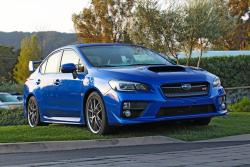 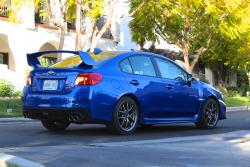 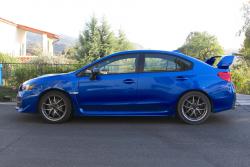 2015 Subaru WRX STI. Click image to enlarge |
Originally published March 21, 2014
Review and photos by Jonathan Yarkony
Ojai, California – Masuo Takatsu is an avid surfer. He also is the Project General Manager for the 2015 Subaru WRX STI.
The key goal of this generation WRX STI’s redesign was to improve, first and foremost, the handling. The lessons of surfing were not lost on Takatsu-san, who uses the principles of surfing to explain the one of the three cornerstones of the WRX STI’s handling improvements: rear grip.
On a surfboard, the rear foot locks down the board, using the body’s weight to ensure stability on the water and an axis on which to pivot, allowing the front foot to steer the board. So too, must the rear end of a car maintain its grip and allow the front wheels to guide the car along its path.
In order to demonstrate this principle, Subaru invited us to Buttonwillow race track outside of Bakersfield, California, a long, winding track in the middle of the California desert where we could have our way with the new 2015 WRX STI and WRX, as well as their predecessors, the 2014 models. What a difference a year makes.
In order to achieve this rear traction, the entire body and chassis were redesigned, starting with a significant increase in the use of high-strength steel (up 30 percent), and even adding key structural components (A-pillar, roof cross-member) made from lighter, stiffer hot-stamped steel (part of the process used to make Samurai swords). Reducing the weight and increasing the strength allowed Subaru to add structural reinforcements to the A pillar, underfloor, and rear apron and floor. The results: total bending rigidity is up 30 percent, while torsional rigidity is up 40 percent.
This stiffening continues to the suspension, in which the subframe, cross-members, control arms, bushings and springs are stiffer, and stabilizer bars increased in diameter 1 mm in back (19 to 20 mm) and 3 mm in front (21 to 24 mm). The results here are 14 and 38 percent improvements in lateral stiffness front and rear, and overall 24 percent improvement in roll stiffness. The suspension and body stiffness are inextricably linked to the second key in Takatsu’s redesign handling goals: flat cornering attitude. The flat ride allows the car to maintain a stable stance and keeps the car’s rear end planted while the front contact patches direct the car.
This incredible investment in body rigidity is also part of the reason we see only the sedan body style – imagine the expense of developing all these improvements twice over… as much as we are hatchback and wagon devotees, we must all recognize the realities that a smaller manufacturer like Subaru must face. Sedans are what sell, even if Subaru faithful contain a far higher proportion of five-door aficionados than your average mainstream brand. However, I spoke with one WRX wagon owner that would be perfectly willing willing-with-much-grumbling to trade the practicality of his beloved hatch for the kind of improvements this generation brings to bear in the handling and steering departments. Yeah, it’s that good.
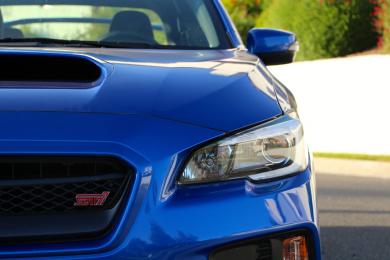 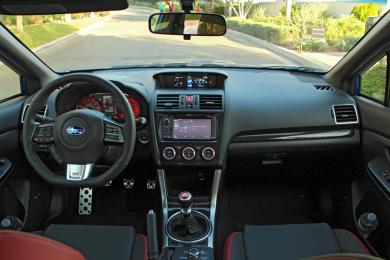 2015 Subaru WRX STI. Click image to enlarge |
Oh, did I mention steering? Subaru has gone against the grain of pretty much every other performance car launched over the past few years and retained a hydraulic power steering setup for the STI (the WRX goes to electric assistance). However, the steering on the previous generation WRX STI was no great shakes, and in fact, it was one of the sore spots for that car. Some might even say it was bad….
Well, STI fans rejoice! With 400 percent (no that’s not a typo, four hundred!) stiffer mount bushings, 125 percent more rigid torsion bar, and a quicker ratio (from 15:1 to 13:1), the steering is a revelation. Without being needlessly heavy, the steering is direct and purposeful, with a clarity that will be appreciated by those that suffered the WRX and STI’s formerly woolen and loose steering response in corners. It’s a perfect complement to the flat ride and rear grip, and the third and final of Masuo Takatsu’s three pillars of handling improvements envisioned for this fourth-generation WRX STI.











































